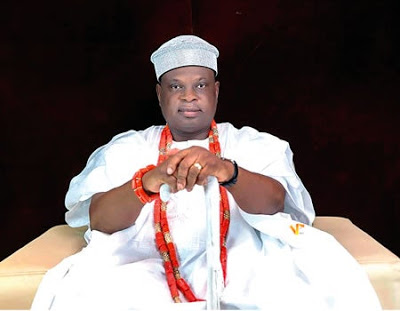The evolution of EQ has roots in ancient Greece, but it only came to be well known in the workplace in the last 20 years – fastcompany.com
Emotional intelligence (EQ) is one of the most important skills candidates need when they’re looking to land a job. And it’s also a key factor to move up the ranks more quickly. We’ve also heard that EQ is a better predictor of success in the workplace than IQ, and that’s been backed by numerous studies in both academia and through data from companies on their employees.
But it wasn’t always part of workplace parlance, essentially because executive leadership often finds it difficult to tie such a squishy concept to productivity, revenue, and other key performance metrics. (Other research does just that, though). So where did this concept originate, and how has it evolved?
EQ’s more than 2,000-year-old origin
Psychologists, scholars, and philosophers have been studying human intelligence throughout history. As far back as Plato in ancient Greece, on through Spinoza, Descartes, Hobbes, and Hume, great thinkers have posited that emotion as a response to certain sorts of events of concern to a subject set off changes in the body that in turn motivate behavior. Over the past 80 years or so, several have introduced theories and language around the kind of intelligence that isn’t gained through book learning.
For example, in a compilation for Tallinn University in Estonia, Sirje Virkus outlines the iterations of emotional intelligence beginning in the 1930s when Edward Thorndike discussed “social intelligence,” or the ability to get along with other people. David Wechsler built on this concept by suggesting that the moods, feelings, and attitudes surrounding intelligence could be critical components to success in life. In the 1950s, Abraham Maslow (yes, the same one who created the hierarchy of needs) discussed how people could develop emotional strength. Twenty-five years later, Howard Gardner published The Shattered Mind, which introduced the concept of multiple intelligences.
Coining the phrase and popularizing the concept
In the summer of 1987, two professors, Peter Salovey (the current president of Yale University) and his colleague John Mayer, were painting the walls of Salovey’s house. The idea of emotional intelligence didn’t exist yet, but the professors were a fortuitous match: Salovey studied emotions and behavior, and Mayer studied the link between emotions and thought. The two had a conversation while painting, and the name “emotional intelligence” was born.
According to the history of the development of the Yale Center for Emotional Intelligence, they opined that existing theories of intelligence had no place for emotions.
Using each of their expertise, they articulated a theory that described a new kind of intelligence: The ability to recognize, understand, utilize, and regulate emotions effectively in everyday life. In a pivotal paper, published in 1987, they described this revolutionary idea, which they called ’emotional intelligence.’
Fast forward a few years to 1990, when Daniel Goleman, then a science reporter for the New York Times, stumbled across an article Salovey and Mayer published in an academic journal. Reading this sparked a eureka moment for Goleman, which he described in this way:
Those were days when the preeminence of IQ as the standard of excellence in life was unquestioned; a debate raged over whether it was set in our genes or due to experience. But here, suddenly, was a new way of thinking about the ingredients of life success. I was electrified by the notion, which I made the title of [of my] book in 1995.
In his book, Goleman contends that emotional intelligence could guarantee business success. He outlined the four essential skills that emotionally intelligent people share, to prove his thesis.
- They were good at understanding their own emotions (self-awareness)
- They were good at managing their emotions (self-management)
- They were empathetic to the emotional drives of other people (social awareness)
- They were good at handling other people’s emotions (social skills)
At the time, Goleman said that if one day he was able to hear two strangers discuss the concept of emotional intelligence and understand what it meant, he would have met his personal goal to get the notion out to the world. Now he says:
The phrase emotional intelligence, or its casual shorthand EQ, has become ubiquitous, showing up in settings as unlikely as the cartoon strips Dilbert and Zippy the Pinhead and in Roz Chast’s sequential art in the New Yorker. I’ve seen boxes of toys that claim to boost a child’s EQ; lovelorn personal ads sometimes trumpet it in those seeking prospective mates. I once found a quip about EQ printed on a shampoo bottle in my hotel room.
EQ’s lasting (and expanding) impact at work
Since then, numerous corporate and academic studies have tested the concept to prove that EQ does indeed surpass IQ when it comes to succeeding in the workplace. From the Center for Creative Leadership to International search firm Egon Zehnder International, the Carnegie Institute of Technology, and companies such as American Express, Avon, Unilever, HSBC, Pfizer, Lockheed, Hilton, and Motorola, all have drawn similar conclusions.
For example, as Harvey Deutschendorf writes in a previous report in Fast Company, a study by McClelland showed that after supervisors in a manufacturing plant received training in emotional competencies such as how to listen better, lost-time accidents decreased by 50% and grievances went down from 15 per year to three. The plant itself exceeded productivity goals by $250,000.
And Goleman himself points out when Johnson & Johnson looked globally at its mid-career workforce to identify those individuals with high leadership potential, the ones they picked routinely had higher EQ competencies than their less-promising peers.
No wonder. As Deutschendorf points out, the evolution of EQ has led to a simple–but singular–focus when hiring or promoting workers.
“People with social skills are excellent team players as they have the ability to move an agenda along and keep focus while at the same time remaining aware of the emotional climate of the group and possess the ability to respond to it,” he writes. “These people are excellent at making connections, networking, and bringing people together to work on projects.”
Culled from fastcompany.com













